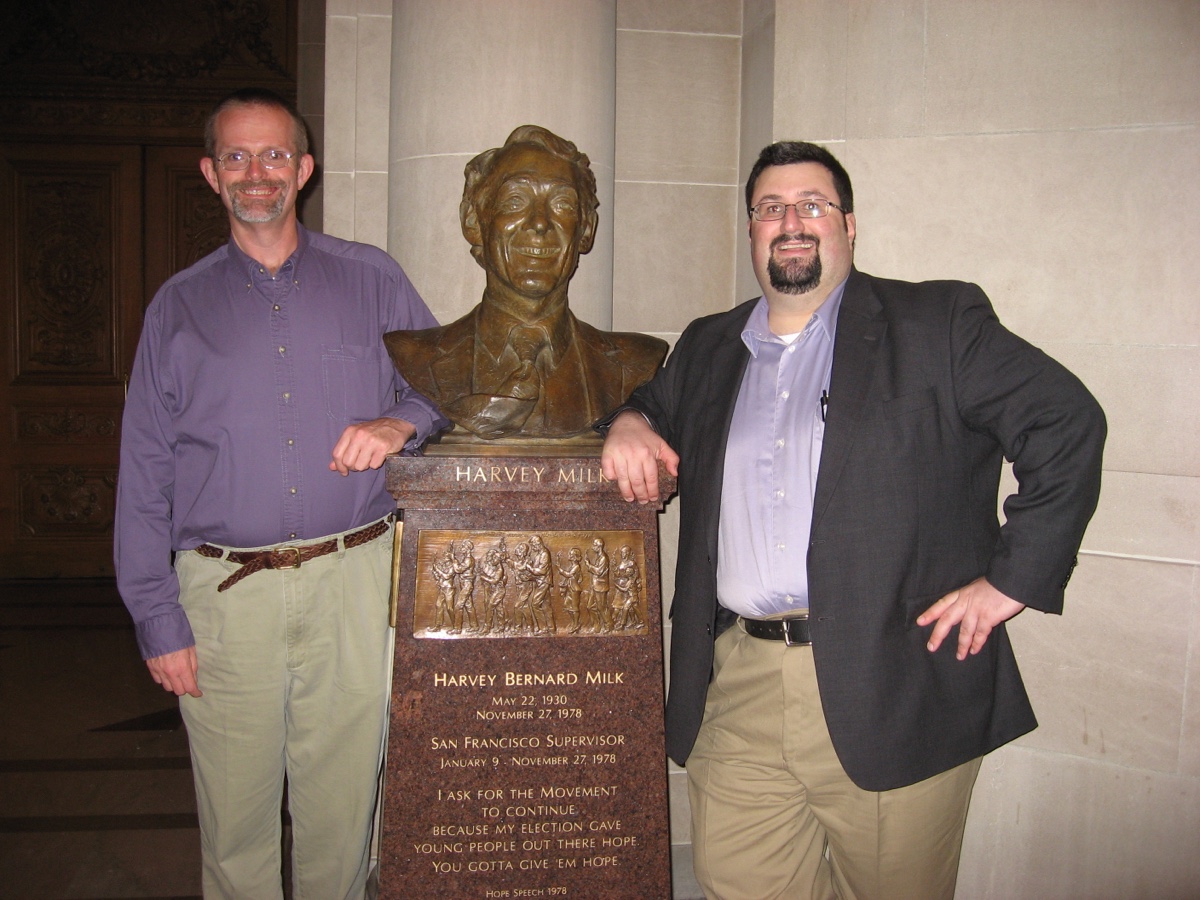The Complimentary Spouse and I tend to crow about our anniversary every year, and there’s a good reason why we’re so excited about it. When we met in 2002, marriage for a same-sex couple was unimaginable. How we got from there to here is an amazing story, one that’s inextricably linked to the modern movement for civil rights and equality.
Let me tell you how it all happened.
Picture it: Los Angeles, 2004. We’re on vacation when we learn San Francisco Mayor Gavin Newsom has just ordered the city to issue same-sex marriage licenses. We seriously discussed flying or driving to San Francisco, only to decide eventually (and somewhat regretfully) that it would be impractical.
All those marriages were eventually annulled.
A few months later, the Massachusetts Supreme Court ruled in favor of marriage equality, making same-sex marriage legal there. However, the governor at the time (a guy named Mitt Romney) dug up an obscure law that prevented people from getting married in Massachusetts if they couldn’t legally get married in their home state. It was a shameful law enacted ages ago to prevent interracial marriage, and it was being used again to discriminate.
Our Opportunity Arrives
It was four years later when the California Supreme Court ruled for marriage equality. This time, there was no state law preventing people from other states from getting married. I proposed to Britt in the airport when he returned from a trip with students to Istanbul in the spring. We made plans to get our marriage license in July (we had already made plans to go to San Francisco). However, as you might imagine, the wedding schedule at City Hall was already filled up, and we made tentative plans to return for the wedding itself in August or September.
One day, I checked the wedding schedule at City Hall again and found a single opening — July 3 at 3:45 p.m., the last appointment of the day before Independence Day. There must have been a cancellation. I snagged it immediately. Now we could obtain our license and get married on the same day.
All this time, we didn’t tell anyone about our plans. The marriage equality law didn’t go into effect until June 16, and we were worried that it would be blocked. As July drew closer, our marriage seemed more like a sure thing. With a few days to go, we let six people in on the secret: my mother and father, my brother and sister-in-law, and Britt’s brother and sister-in-law.
We had some problems getting to San Francisco on July 2, but were able to reroute our trip to San Jose and arrive very late. Britt’s brother and sister-in-law picked us up early in the morning and drove us to San Francisco, where my parents had arrived the previous day.
We had lunch on July 3 at a California Pizza Kitchen across from the Westin, where we were staying. In an odd coincidence, Britt ran into a former student there. We took the Muni to City Hall, checked in, filled out the paperwork, and were married in the rotunda near the bust of Harvey Milk. The ceremony lasted about 10 minutes, and partway through, I was so happy I burst out laughing. The officiant declared we were “partners for life,” and we kissed.


We emailed everyone we knew that evening to share the news. Everyone was ecstatic.
Legal Questions and Complications
That wasn’t the end of our marriage journey, though. Marriage equality had only reached a handful of states, and our home state of Florida wasn’t one of them. Our marriage wasn’t recognized by the federal government, either. In November, voters in both California and Florida said no to marriage equality and enshrined discrimination in their constitutions. (In California, it was eventually decided marriages done before Proposition 8 would not be annulled, but for a few weeks, Britt and I weren’t sure if we would still be married.)
Despite being married, we had the legal standing of roommates. This had real ramifications — for example, paying taxes on my MBA classes at UT, whereas an opposite-sex spouse would not. I don’t remember how much it cost to hire a lawyer to create the documents that would provide some of the legal protections that opposite-sex married couples get automatically.
At a car rental counter in Las Vegas in 2012, we were adding me as an additional driver, and Britt explained that there should be no charge because we were married. The woman behind the counter said, “Not in Nevada, you’re not.”
Our marriage status became something of a game when we traveled. When the plane landed, we’d say, “We’re married here!” or “We’re not married here.”
Society and the Courts Catch Up
Slowly but surely, two things began to happen. First, LGBT advocates began winning court cases that validated marriage equality as the law. Second, public opinion began moving in the right direction. Marriage equality spread from a few states to many. The federal government decided it could no longer stand by the abomination that was the Defense of Marriage Act.
In early 2015, marriage equality came to Florida despite the protestations of our deplorable attorney general, Pam Bondi. And in June 2015, Obegerfell made marriage equality the law of the land.
Today, I don’t give any thought to the fact that Britt and I are a same-sex married couple. Just as it never crossed our mind that we couldn’t get married in 2002, it seems inconceivable today that we wouldn’t be married.
And that, my friends, is why we celebrate our anniversary loudly.
